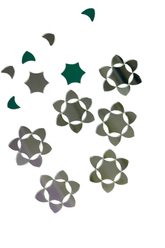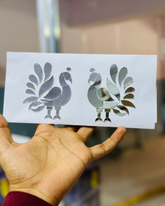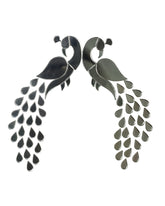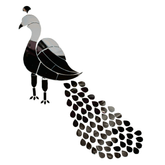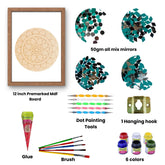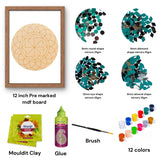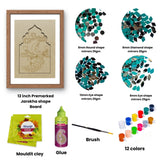How to Choose Materials for DIY Projects: A Complete Guide
Choosing the right materials for your DIY projects is crucial to achieving the best results. Whether you're crafting home decor, building furniture, or creating handmade gifts, the materials you select can make or break your project. In this guide, we’ll walk you through the key factors to consider when choosing materials for your DIY projects, helping you make informed decisions that lead to successful and satisfying results.
Why Choosing the Right Materials Matters:
Durability:
The materials you choose will determine how long your project lasts. Quality materials lead to more durable and long-lasting results.
Aesthetics:
The look and feel of your project are directly influenced by the materials you use. Different materials offer different textures, colors, and finishes.
Functionality:
The purpose of your project dictates the type of materials you need. For example, outdoor furniture requires weather-resistant materials.
Budget:
Your choice of materials will also affect your overall cost. Finding a balance between quality and affordability is key.
Understanding Different Types of DIY Materials:
Wood:
Wood is one of the most versatile materials used in DIY projects. It’s ideal for building furniture, creating decor, and more.
Pine: Affordable and easy to work with, pine is great for beginners.
Oak: Known for its strength and durability, oak is perfect for furniture.
Plywood: A budget-friendly option that’s great for a variety of projects.
Fabric:
Fabric is essential for projects like sewing, upholstery, and home decor.
Cotton: Easy to work with and available in many patterns, cotton is ideal for beginners.
Canvas: Durable and strong, canvas is great for bags, upholstery, and outdoor projects.
Felt: Soft and easy to cut, felt is perfect for crafting projects like ornaments and toys.
Metal:
Metal adds a modern and industrial touch to DIY projects.
Aluminum: Lightweight and rust-resistant, aluminum is great for outdoor projects.
Steel: Strong and durable, steel is ideal for furniture and structural projects.
Copper: Known for its unique color, copper is often used in decorative projects.
Paper and Cardstock:
Paper and cardstock are versatile materials for crafting projects such as scrapbooking, card making, and decor:
Cardstock: Thicker than regular paper, cardstock is sturdy and comes in various colors.
Patterned Paper: Perfect for adding visual interest to your projects, patterned paper is available in countless designs.
Origami Paper: Thin and easy to fold, origami paper is ideal for intricate paper crafts.
Acrylic and Plastic:
Acrylic Sheets: Clear or colored acrylic sheets are perfect for making signs, organizers, and decor.
Resin: Used in jewelry making and crafts, resin creates a glossy, durable finish.
Factors to Consider When Choosing DIY Materials:
Project Requirements:
Start by identifying the specific requirements of your project.
- What is the purpose of the project?
- Will it be used indoors or outdoors?
- Does it need to be durable or flexible?
For example, if you’re building outdoor furniture, you’ll need weather-resistant materials like treated wood or metal. If you’re creating indoor decor, you might prioritize aesthetics over durability.
Skill Level:
Your skill level plays a significant role in material selection. If you’re a beginner, opt for materials that are easy to work with, such as softwoods, cotton fabric, or cardstock. Experienced DIYers might prefer more challenging materials like hardwoods, metal, or acrylic.
Budget:
Budget is a major factor in material selection. While it’s tempting to go for the highest quality materials, it’s important to balance quality with cost. Consider shopping at local hardware stores, craft stores, or online marketplaces to find the best deals.
Sustainability:
If sustainability is important to you, consider choosing eco-friendly materials. Look for recycled or upcycled materials, sustainably sourced wood, or natural fibers. Not only are these options better for the environment, but they also add a unique touch to your project.
Availability:
Finally, consider the availability of the materials you need. Some specialty materials may be harder to find, while others are readily available at local stores or online. Plan ahead to ensure you have all the necessary materials before starting your project.
Conclusion:
Choosing the right materials is a crucial step in any DIY project. By considering the project requirements, your skill level, budget, sustainability, and availability, you can select the materials that will help you achieve the best possible results. Whether you're a seasoned DIY enthusiast or just starting out, taking the time to choose the right materials will make your crafting experience more enjoyable and successful.



